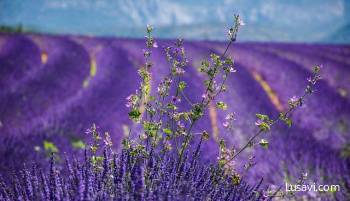TRAVELING IN FRANCE
1) GENERAL INFORMATION
Geography and size
France is the largest country in the European Union and one of the most visited in the world. It borders Belgium, Luxembourg, Germany, Switzerland, Italy, Monaco, Spain, and Andorra. It is bordered to the west by the Atlantic Ocean and to the south by the Mediterranean Sea. Its terrain is highly diverse, ranging from the Atlantic and Mediterranean coasts to the Alps and Pyrenees, from the plains of the north to the hills of Burgundy and the forests of the Vosges.
Useful Information
- Capital: Paris
- Official language: French
- Population: ~67 million
- Currency: Euro (€)
- Time zone: UTC +1 (CET) / UTC +2 (CEST in summer)
- Predominant religion: Catholicism, but France is secular
- Telephone code: +33
Useful numbers:
- Emergency: 112
- Police: 17
- Ambulances: 15
- Firefighters: 18
2. DOCUMENTS AND ACCESS
- EU/Schengen citizens: can enter with a valid identity card only.
- Non-EU citizens: passport and, in some cases, visa.
- Minors: if not traveling with both parents, they must have a signed authorization.
3. TRANSPORT AND ROADS
By car
Drive on the right
Always use dipped headlights in poor visibility
Watch out for speed cameras: they are very common
Toll motorways (indicated by "A"): fee based on km
Numerous free parking areas
Environmental zones (EZZ): some cities restrict the circulation of the most polluting vehicles. A "Crit’Air" stamp is required.
By train
High-speed TGV network: connects the main cities
Regional trains (TER) and intercity trains: good for exploring less touristy areas
Reservations recommended for long-distance trains
By bus
Companies such as Flixbus, BlaBlaBus, and Ouibus offer affordable routes.
By plane
Main airports: Paris Charles de Gaulle, Orly, Lyon, Marseille, Nice, Toulouse
Domestic connections with low-cost and regional airlines
By bike
Excellent cycling infrastructure, especially along the Loire, in Alsace, and Brittany.
Easy rentals in cities with services such as Vélib (Paris).
4. WHAT TO SEE (BY REGION)
Paris and Île-de-France
- Iconic monuments: Eiffel Tower, Arc de Triomphe, Louvre, Notre-Dame
- Neighborhoods: Montmartre (artistic), Le Marais (historical), Saint-Germain (intellectual)
- Excursions: Versailles, Disneyland Paris
Loire
- Famous Renaissance castles: Chambord, Chenonceau, Amboise
- Ideal for bike tours along the river
Normandy and Brittany
- Mont-Saint-Michel
- D-Day Landing Beaches
- Cliffs of Étretat
- Historic cities: Rouen, Saint-Malo, Rennes
Cuisine: Butter, crepes, oysters, cider
Provence-Alpes-Côte d’Azur
- Provence: Lavender fields, villages (Gordes, Roussillon), Avignon
- French Riviera: Nice, Cannes, Saint-Tropez, Menton
- Southern Alps: Hiking and skiing (Gap, Briançon)
French Alps
- Top ski resorts: Chamonix, Megève, Les Deux Alpes
- Summer hiking in the Vanoise National Park
Rhône-Alpes and Auvergne
- Lyon: France’s gastronomic capital
- Auvergne volcanoes
- Natural landscapes and spas
Burgundy
- Famous vineyards (Beaune, Dijon)
- Romanesque architecture, small medieval villages
Bordeaux and New Aquitaine
- World-famous red wine
- Elegant and lively city
- Dune du Pilat: Europe’s highest dune
Alsace and Lorraine
- Fairytale villages: Colmar, Riquewihr, Eguisheim
- Strasbourg: seat of the European Parliament
- Half-timbered architecture, famous Christmas markets
Occitanie (Toulouse, Carcassonne, Montpellier)
- Carcassonne: medieval fortified citadel
- Toulouse: the "city rose"
- Pyrenees: great for hiking and winter sports
5. FRENCH GASTRONOMY
Typical dishes by region:
- North: Moules-frites, carbonade flamande
- Alsace: Choucroute, tarte flambée
- Brittany: Galettes, oysters
- Lyon: Andouillette, quenelles, cured meats
- South-West: Confit de canard, foie gras, cassoulet
- Provence: Ratatouille, tapenade, bouillabaisse
- French Riviera: Salade niçoise, socca
Cheeses
- Over 400 varieties! The most famous:
- Brie, Camembert, Roquefort, Comté, Reblochon, Bleu d’Auvergne
Desserts
- Crêpes, tarte tatin, mille-feuille, madeleines, macarons
Wines and Beverages
- Wines: Champagne, Bordeaux, Burgundy, Alsace, Loire
- Others: Calvados (Normandy), Cognac, Armagnac, Pastis (Provence)
6. CUSTOMS, CUSTOMS, AND MANNERS
Social Behavior
- Always greet with a "Bonjour" when entering shops or restaurants
- The French appreciate formal courtesy
- Kisses are exchanged twice on the cheek (this varies from region to region)
- Privacy and respect for public spaces are important
At the Table
- Eat with cutlery (no hands on food)
- Don’t start eating until everyone is served
- Cheese is served after the main course and before dessert
- Meals are slow, social, and can last hours.
Shops and Hours
- Many shops close for lunch (12:00-2:00 PM)
- Supermarkets open until 8:00-9:00 PM
- Sunday: Closed almost everywhere, except in tourist areas.
- Tips : Not mandatory, but leaving a few euros (5–10%) is appreciated if the service is good.
7. EVENTS AND FESTIVALS
National Holiday: July 14 (Bastille Day)
Music Festival: June 21
Christmas Markets: Especially beautiful in Alsace
Cannes Festival: May
Tour de France: July
Nice Carnival: February
8. PRACTICAL TIPS
- Learn a few words in French: the French appreciate those who make an effort.
- Watch out for strikes (especially transport strikes): they are frequent and announced in advance.
- Variable climate: always bring a light raincoat.
- Avoid tourist restaurants: prefer bistros frequented by locals.
On Lusavi.com you will find: Vacation rentals in France | B&Bs in France | Hotels in France | Guesthouses in France | Farmhouses in France | Apartments in France | Room rentals in France

